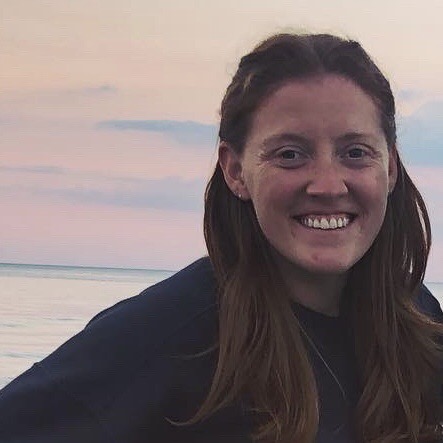- Mary Clare

- Oct 6, 2023
- 3 min read
"People have all kinds of sides to them, Mei, and some of them are messy." - Jin Lee, Mei Lee's father in Pixar's Turning Red
When I watch Mei Lee from Turning Red, I can't help but see a reflection of myself in her character. Mei is a young teenager who transforms into a giant red panda when she gets too excited or emotional. Adorable, tear-jerking, heart-warming adventures ensue as most Pixar movies do, if you have seen it, you know, if you haven't, check it out!
The first time I watched Turning Red in 2022, I took a short video clip of a scene where Mei's mother is reflecting her tendency to put others before herself and I posted it on my Instagram story some stickers and tears in my eyes because hellooo, it was me! I know I'm not alone in feeling this way, but I mean c'mon, Mei has red hair and cankles, it's uncanny!

Below is the screenshot of my story. LINK HERE for the video clip.

Mei Lee's journey also speaks to the power of vulnerability and the importance of expressing emotions. When she transforms into a red panda, she is unable to hide her true feelings, and this vulnerability ultimately leads to growth and self-acceptance. This resonates with me because I have come to realize that expressing my emotions openly and honestly is a crucial part of my personal growth and well-being. Hence this blog I am writing right now.
If you receive my newsletter, you may have noticed I took a few months off from sending it. It wasn't the only thing in my life and work that was put on pause this summer. Now, why did I take a break? Three important words.
My mental health.
I was struggling and I was fortunate that I could take a break from work to spend a lot more time in therapy and it made all the difference. My story didn't pause, but I let go of all the external commitments and influences I possibly could, to tune in and reset.
Reset boundaries.
Reset expectations.
Reset routines
Don't get me wrong, it took me 35 years to become the way I was and the work never really ends, but those two and a half weeks were where my story changed from a mystery thriller where I was the victim to a hero's journey where I am the hero.
I like to picture my mental health like a colorful, complex, mosaic that makes no sense, has no beginning and no end. My mosaic is a picture of myself made up of all my experiences, genetics, tools, resources, people, places, and things.
When I am going through life, not paying attention, the mosaic is a blur.
When I am anxious, I am fixated on the next stones that aren't a part of the pattern yet.
When I am depressed, I am fixated on that stone that was added at 2pm on April 23rd, 2004. (figuratively speaking)
When I am meditating, in therapy, or in a coaching session, I am observing the pattern, the colors, the beauty.
I am the mosaic and I am also the only one who can see it.
We are all a work of art, a jagged, colorful, nonsensical work of art.
Like Mei Lee on her journey of self-discovery and acceptance, I have often struggled with understanding and accepting my own unique qualities and quirks. Mei's transformation into a red panda symbolizes her embracing her true self, even when it feels different or unusual. I have learned to embrace my own idiosyncrasies and accept that they make me who I am. When I buzzed my hair recently, I definitely embraced my true self, which felt unusual and now feels SO amazing. Those are countless stones that have been added to my mosaic.

Mei Lee's character represents a multifaceted and relatable portrayal of someone coming to terms with their identity and finding their place in the world. Through her story, I see echoes of my own struggles, triumphs, and personal growth. Mei serves as a reminder that embracing our true selves and seeking genuine connections are universal experiences that many of us share.
I hope you had an amazing summer, I hope you're enjoying the fall foliage if it shows up where you are and I look forward to connecting with you again soon.
Cheers!
MC

